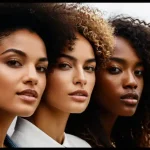Key Historical Influences on UK Women’s Fashion
Understanding UK women’s fashion history reveals how deeply culture and society shape style. Major fashion eras, such as the Victorian period, the Roaring Twenties, and the Swinging Sixties, each brought distinct shifts. The Victorian era emphasized modesty with corsets and layered skirts, reflecting strict social norms. Contrastingly, the 1920s introduced looser dresses and shorter hemlines, symbolizing newfound freedom after World War I.
Influential figures played a crucial role too. Designers like Mary Quant in the 1960s popularized the mini skirt, breaking traditional fashion rules and aligning with youth rebellion and social change. Earlier, Queen Victoria’s preferences reinforced conservative dress, influencing trends for decades. Movements like the suffragettes also used clothing as political expression, pushing for women’s rights while altering public perceptions of female style.
Also read : What are the essential accessories for UK women to elevate their fashion game?
Societal factors such as industrialization facilitated mass production, making fashion more accessible. Changing roles of women, through employment and activism, drove the demand for practical yet stylish clothing. Together, these historical influences demonstrate how UK women’s fashion is a dynamic mirror of broader cultural evolution.
From Corsets to Comfort: Shifting Priorities in Dress
Fashion has witnessed a dramatic evolution in women’s dress, moving decisively from restrictive, uncomfortable corsets to garments that prioritize functionality and personal expression. This shift in women’s dress evolution underscores changing values where comfort increasingly triumphs over constraint.
Also to discover : How Has British Fashion Influenced Global Women’s Lifestyle Trends?
Historically, corsets symbolized societal norms that emphasized an idealized silhouette at the expense of physical ease. However, as women gained greater autonomy through movements like suffrage and entered the workforce in larger numbers, clothing adapted. Practicality became paramount, reflecting broader changing fashion priorities linked to social and cultural catalysts such as wars and labor participation.
Today’s fashion trends clearly echo this transformation. Dresses, once heavily structured and limiting, now favor breathable fabrics, relaxed fits, and versatile designs. This progression speaks to an embrace of personal comfort without sacrificing style — a balancing act that defines modern wardrobe choices. The comfort vs. constraint debate in clothing continues to influence designers who craft apparel reflective of contemporary values: self-expression, ease, and empowerment through dress.
Iconic Styles and Their Modern Counterparts
Iconic styles rooted in the UK’s rich fashion history continue to shape modern fashion trends. Elements such as the punk movement’s rebellious spirit, the mod subculture’s sharp tailoring, and the classic British trench coat have been reimagined in today’s wardrobes. These style adaptations highlight how vintage influences merge seamlessly with current aesthetics.
For example, the punk style—with its bold patterns, distressed fabrics, and DIY ethos—is now a common motif in modern streetwear. Designers have incorporated studded leather jackets and graphic tees to pay homage to this era while appealing to contemporary consumers. Similarly, the clean lines and structured silhouettes from the mod era manifest through updated suits and sleek outerwear that balance tradition and innovation.
High fashion brands often reinterpret historical British looks, either by tweaking fabrics or altering cuts, making the styles more accessible and wearable today. Such adaptations blend nostalgia and novelty, keeping these iconic styles relevant. By understanding these evolutions, fashion enthusiasts can better appreciate how classic UK fashion influences modern design, blending heritage with current trends in a dynamic fashion dialogue.
The Role of Fashion in Shaping Women’s Identity
Fashion and identity have long been intertwined, serving as a powerful tool for personal expression and social messaging. Historically, dress codes imposed strict norms on women’s appearance, directly shaping societal perceptions of femininity and identity. For example, corsets, long skirts, and specific color choices strictly defined what was deemed appropriate, reinforcing traditional gender roles and limiting women’s autonomy.
In contrast, modern fashion acts as a form of empowerment, continuing a legacy rooted in movements such as women’s suffrage and punk subcultures. These eras challenged conventional norms by embracing bold styles that signaled defiance and the reclamation of self-identity. This shift illustrates how women harness fashion not just to adorn themselves but to assert their voices and values visibly.
Today, societal attitudes tend to be more accepting of diverse lifestyle choices expressing individuality. Fashion enables women to navigate and communicate their identity fluidly, reflecting changing cultural dynamics. Whether through minimalist elegance or avant-garde statements, the evolving role of fashion in identity underscores its significance beyond aesthetics—as a means to challenge, empower, and affirm personal and collective narratives.
Enduring Values: Sustainability, Individuality, and Social Status
Fashion values have long reflected society’s shifting priorities, and today, sustainable fashion is a significant expression of enduring cultural attitudes. Rooted in historical make-do-and-mend practices, sustainability has evolved into more than a necessity—it is now a conscious choice that merges environmental responsibility with style. Consumers increasingly see sustainable fashion as a way to honor past values while addressing modern concerns about resource use and waste.
Alongside sustainability, individuality remains a core aspect of fashion. Clothing has always served as a personal language, allowing wearers to express uniqueness. This drive for distinctiveness coexists with social influences, where fashion functions as a visible marker of social position. In this way, garments act as status symbols, signaling taste, class, or affiliation.
Today’s fashion landscape sees a fusion of these values: individuals pursue styles that reflect their personal identity, yet are mindful of the environmental and ethical impacts. This balance creates a diverse marketplace where conscious consumerism thrives, and clothing choices become both personal statements and reflections of broader social values. The past and present converge, illustrating how sustainability, individuality, and social status continue to shape fashion’s evolving narrative.
Choosing the Right Robot Hoover for Your Home
Finding the ideal robot hoover depends on understanding your specific cleaning needs and preferences. When selecting a model, consider the type of flooring, size of your home, and your lifestyle. For example, if you have pets, a robot hoover with strong suction power and a high-capacity dustbin is essential to efficiently handle pet hair.
Battery life is another critical factor. Models offering longer battery runtimes can clean larger areas without needing frequent recharges. Additionally, look for features like smart mapping and scheduling. These allow the robot hoover to clean systematically and according to your timetable, ensuring your home stays tidy with minimal effort on your part.
Many robot hoovers now come equipped with advanced sensors to navigate obstacles and avoid stairs, which reduces the risk of damage or getting stuck. Choosing a model with easy-to-clean brushes and accessible dustbins simplifies maintenance, keeping your appliance working at peak performance.
In summary, prioritize suitability to your home’s layout, pet considerations, and convenience features when choosing a robot hoover. This way, you ensure your investment truly enhances your cleaning routine.



